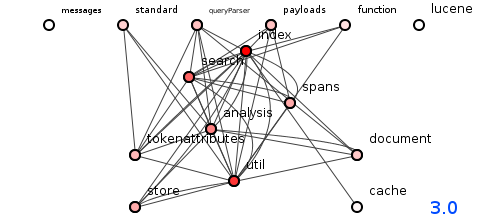
We start with adding the hibernate-search and lucene related dependencies (example for Maven, check Maven central for latest versions): org.hibernate hibernate-search-orm 5.11.8.Final org.hibernate hibernate-search-engine 5.11.8.Final lucene-core 3.6.2 Hibernate search lays upon the search engine Apache Lucene and takes care of the indexation of your search entities without any need for database changes on your side. This means that it's easily plugged in in out existing Hibernate classes with simple annotations which mark our search entities and their properties. This library provides powerful searching capabilities with, in my opinion, the big advantage of being non-intrusive and aspect-oriented. The full-text search capabilities of Hibernate are provided by an extension library called hibernate-search. In this article I present an approach in case of Hibernate ORM used for your persistence layer. Now, even full-text searching is a field with huge amount of possible approaches, mostly depending on the tech stack. Well, in this case we have the full-text search capability which makes it possible to scan all possible attributes of the searching target and finds the best match. But what if we don't want to force explicit searching per attribute? What if we want to enable searching based on best-match merge from all attributes? Concept with probably the best analogy being the Google search box. You fill-in search criteria for the attribute of your choice and fire the search.

The straightforward path is searching by explicit fields or properties, represented like a form with multiple inputs in frontend terms. txt file filter.There are a lot of possible ways for implementing search engine capabilities in our application. Public static final String FILE_PATH = "filepath" Public static final String FILE_NAME = "filename" Public static final String CONTENTS = "contents" This class is used to provide various constants to be used across the sample application.

Next we will create LuceneTester.java and other java classes under the package. To do this, right-click on src in package explorer section and follow the option : New -> Package. First we need to create a package called. Let us now create actual source files under the LuceneFirstApplication project. Now use Add External JARs button available under Libraries tab to add the following core JAR from the Lucene installation directory − To do this, right click on your project name LuceneFirstApplication and then follow the following option available in context menu: Build Path -> Configure Build Path to display the Java Build Path window as follows − Let us now add Lucene core Framework library in our project. Once your project is created successfully, you will have following content in your Project Explorer − Step 2 - Add Required Libraries Now name your project as LuceneFirstApplication using the wizard window as follows − Follow the option File > New -> Project and finally select Java Project wizard from the wizard list. The first step is to create a simple Java Project using Eclipse IDE.


We'll also see the list of indexes created during this process. Let us now proceed by writing a simple Search Application which will print the number of search results found. It is recommended you have the working knowledge of Eclipse IDE. Before you start writing your first example using Lucene framework, you have to make sure that you have set up your Lucene environment properly as explained in Lucene - Environment Setup tutorial. In this chapter, we will learn the actual programming with Lucene Framework.


 0 kommentar(er)
0 kommentar(er)
